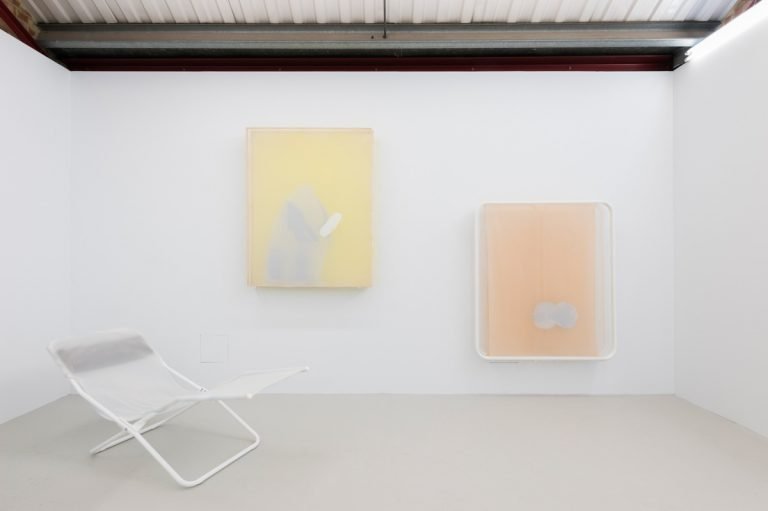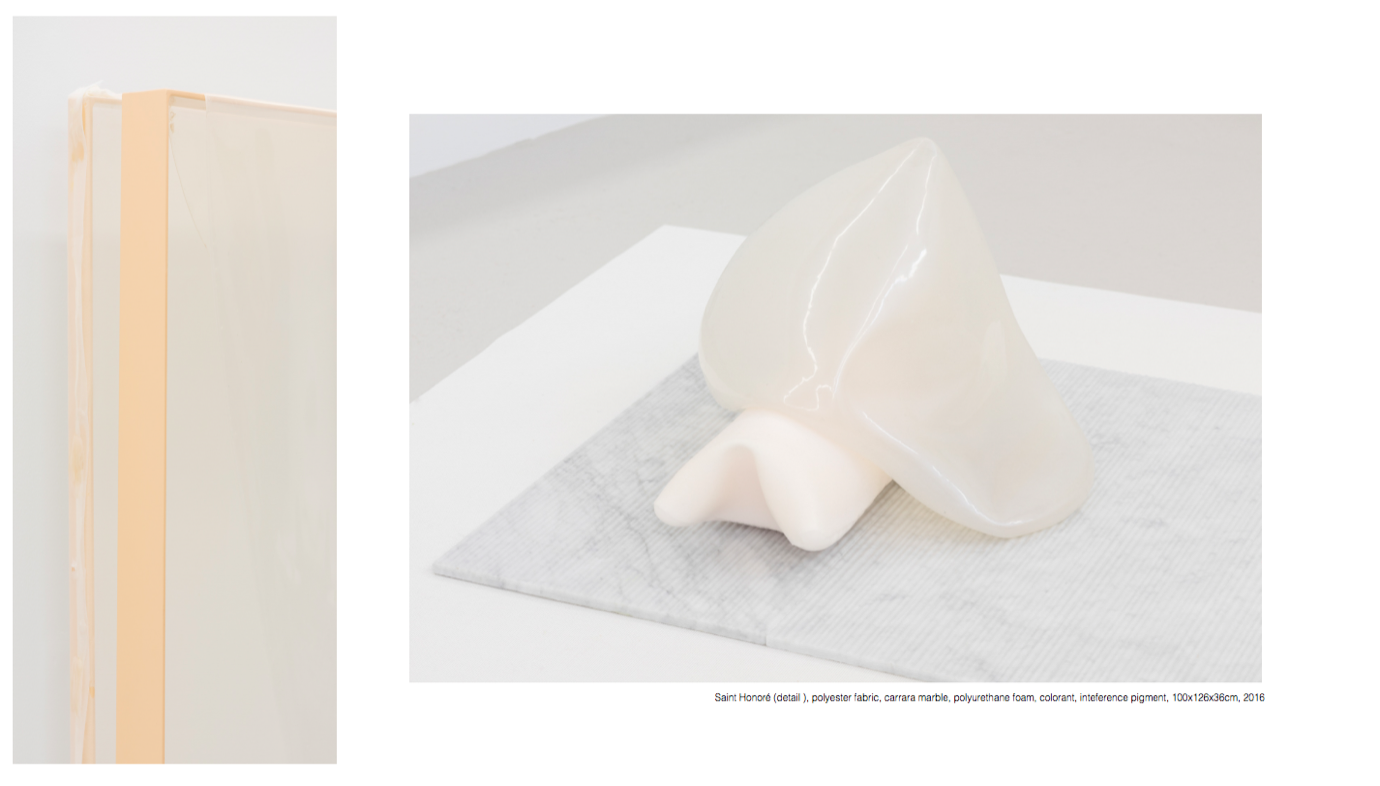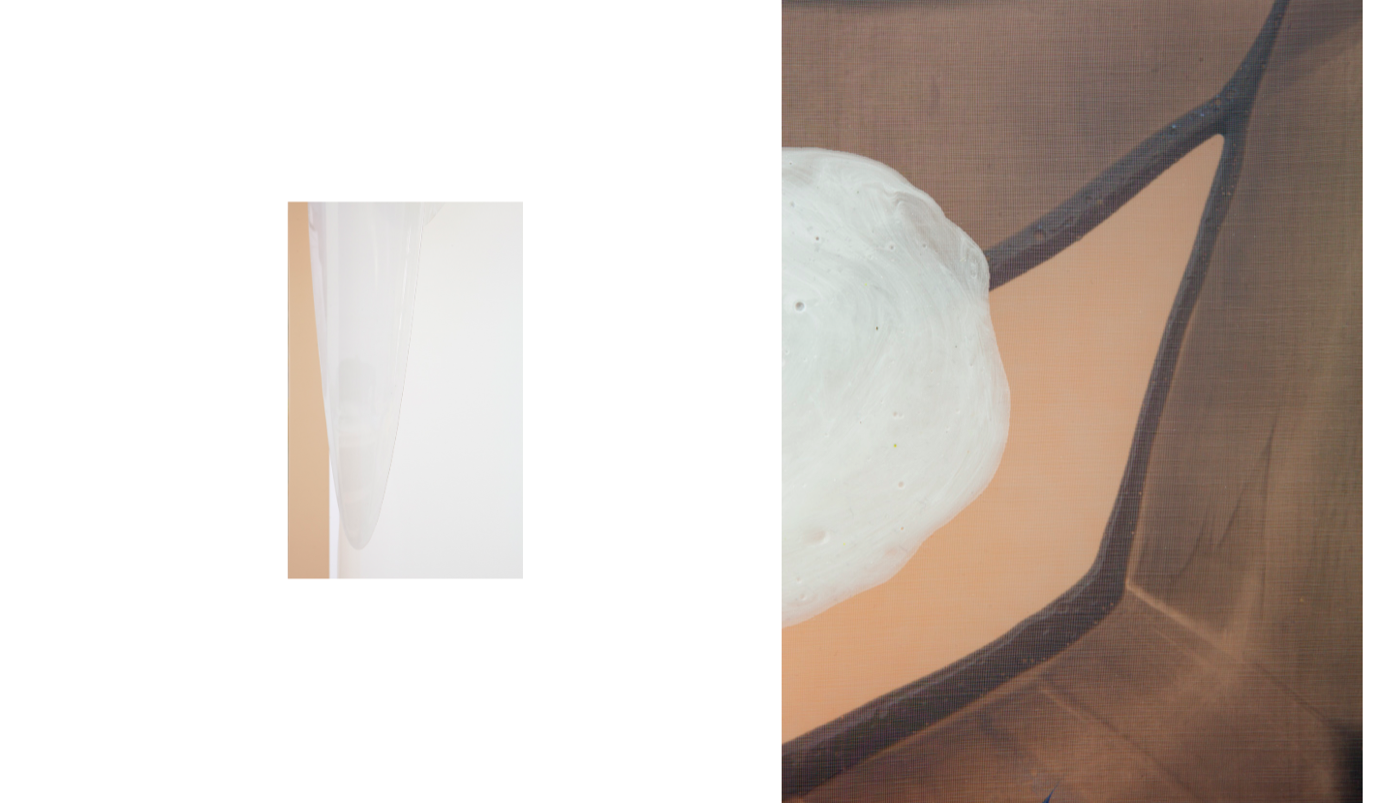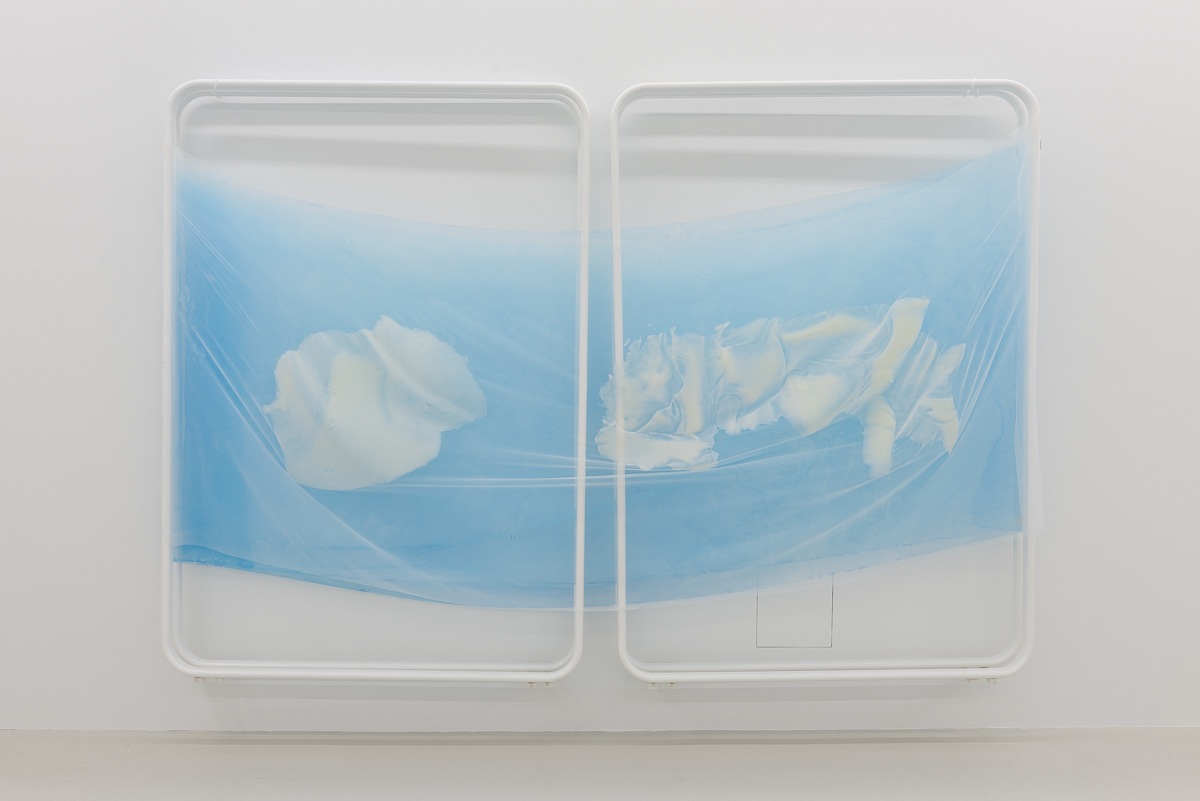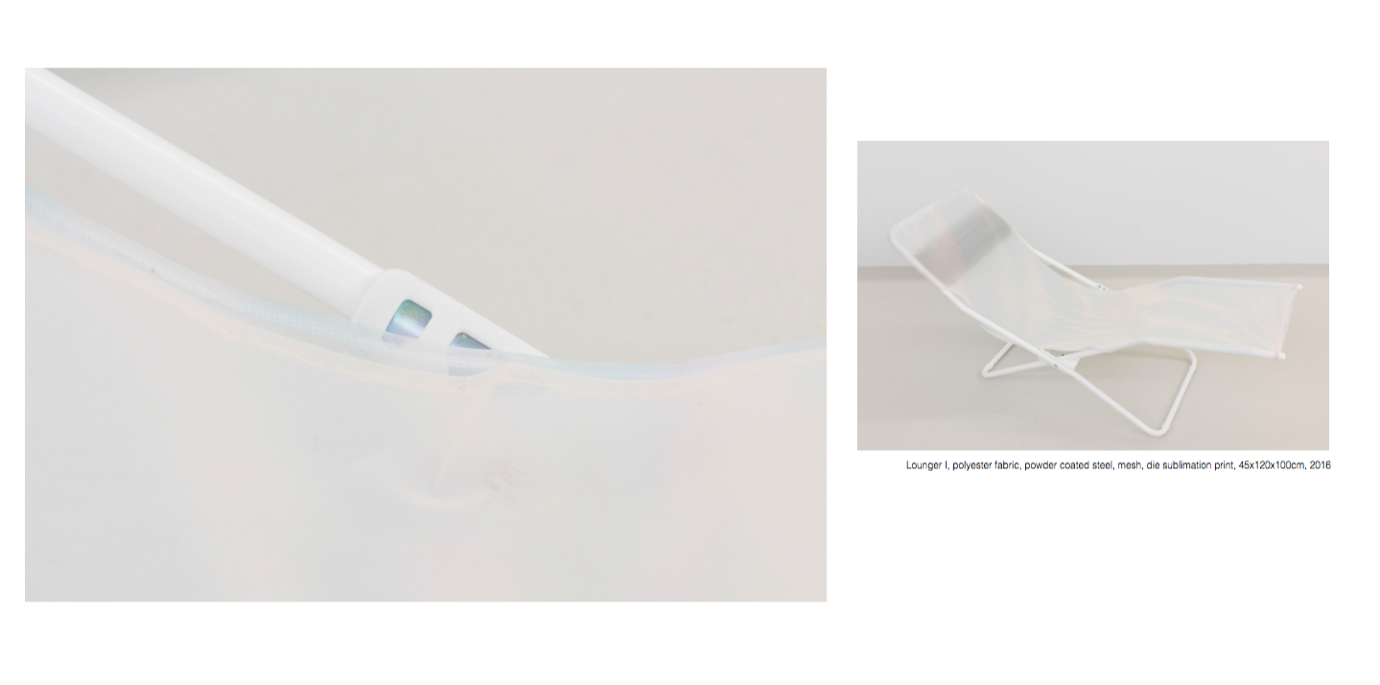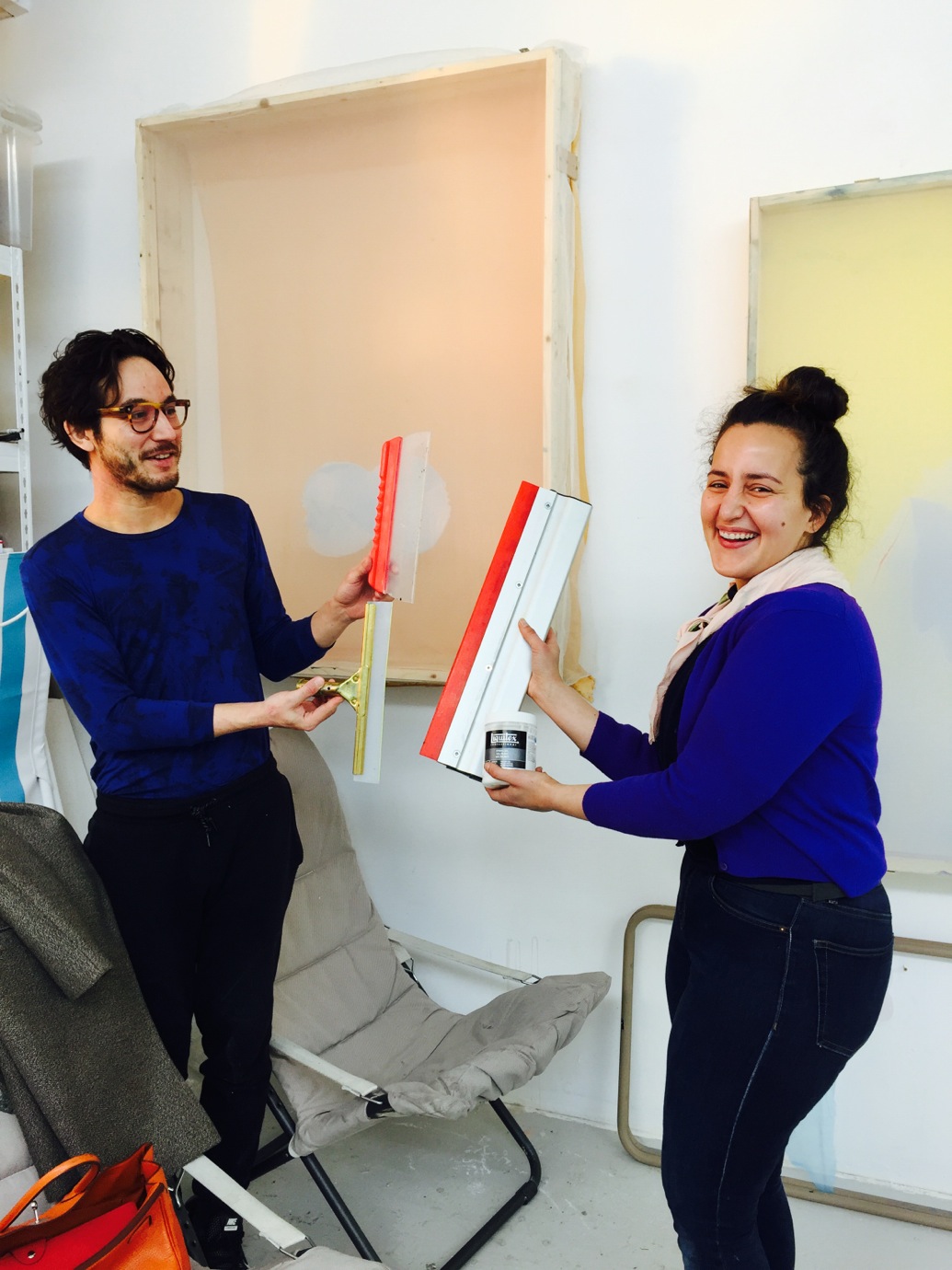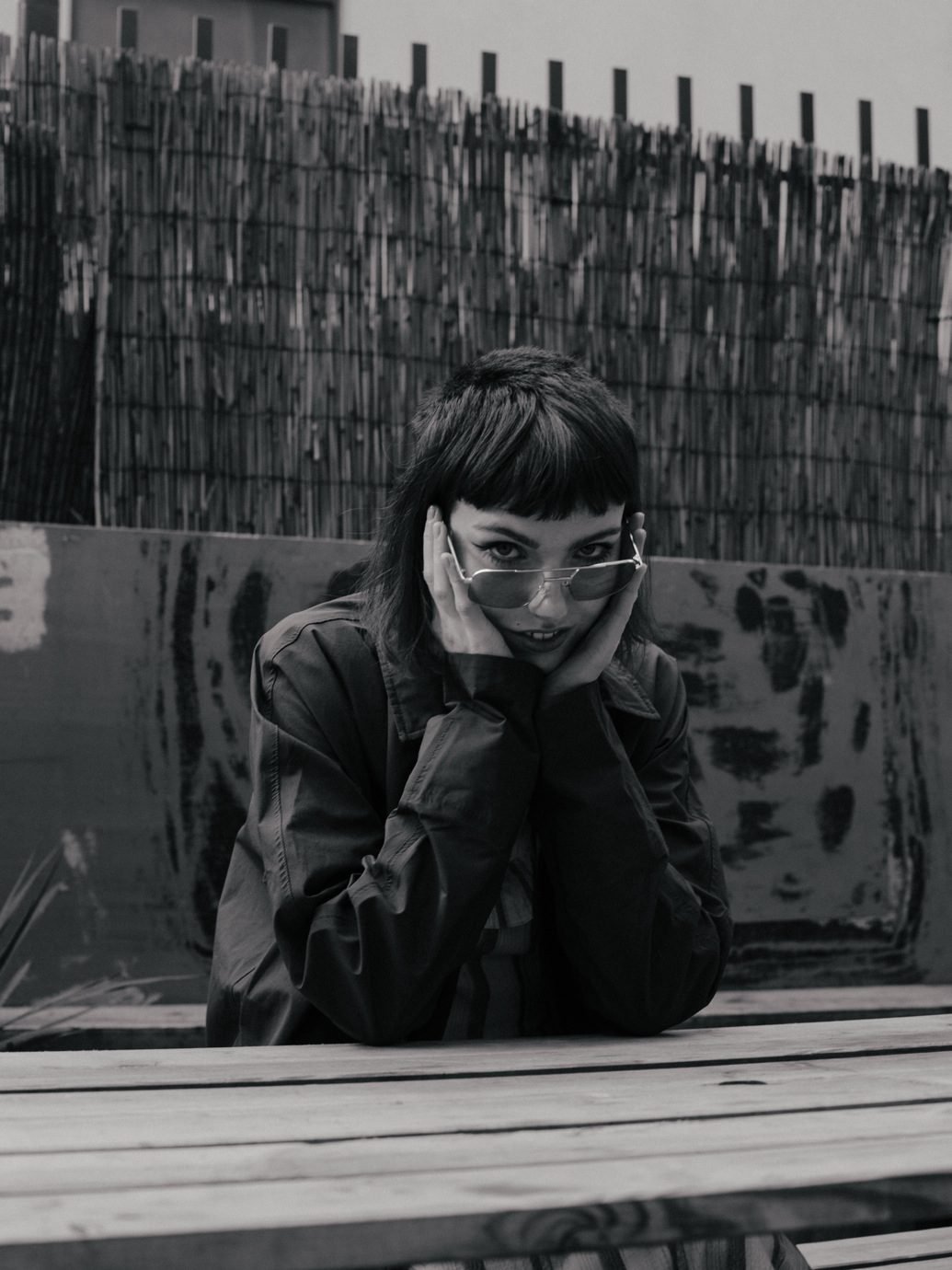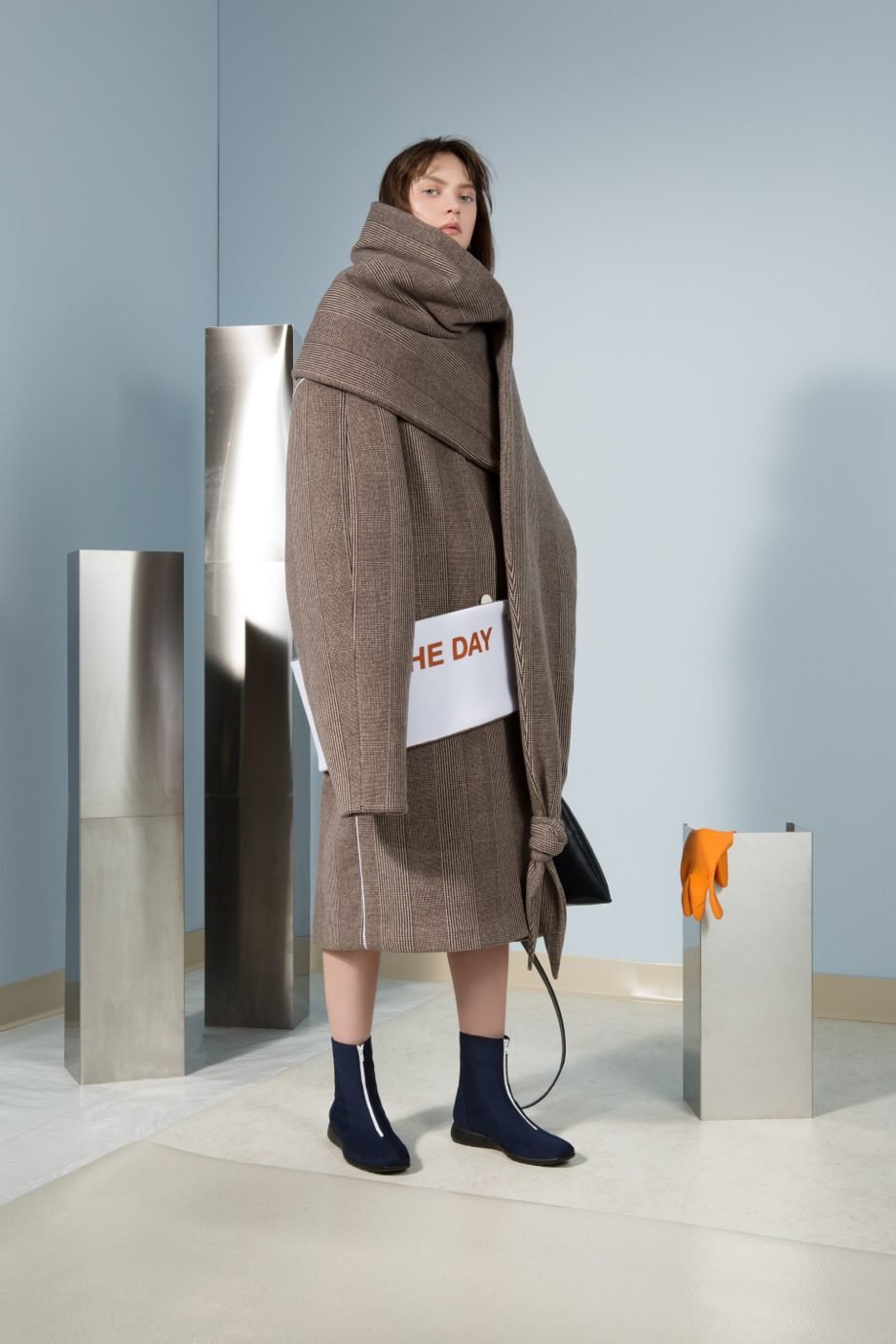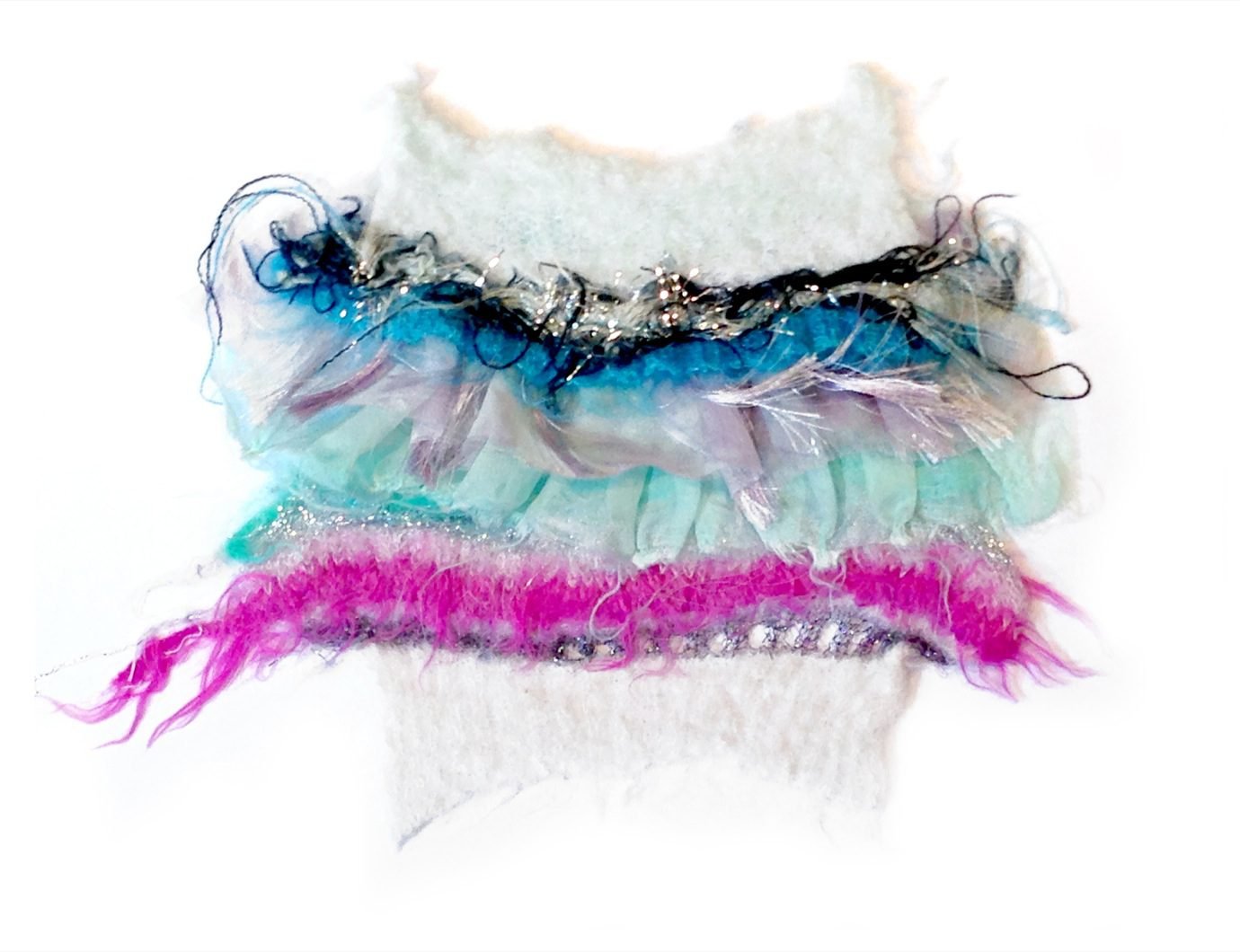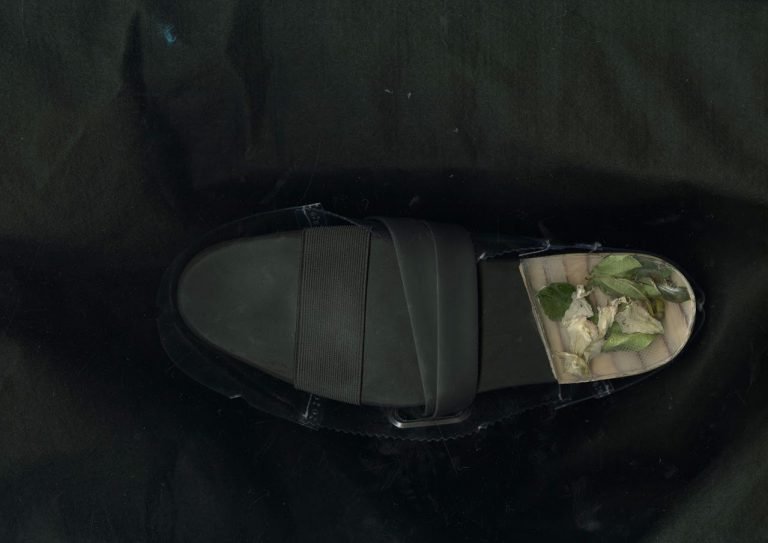“WE MADE THE WORK TO HAVE THE VIEWER AS THE FOCAL POINT. TO CREATE AN EXPERIENCE.”
I first visited Ittah Yoda’s studio in Peckham with gallerist Annka Kultys, who had first shared their work with me online. The images on their website did little justice to viewing it in-person. Upon arrival, I was immediately struck by the three-dimensionality of what they describe as ‘wall pieces,’ which I had assumed were paintings. They consist of layers of transparent mesh fabric, separated by aluminium frames, each of different colours and painted not with brushes, but with squeegees and gel transfers — techniques more common to silk-screening. Some pieces have thick applications of silicone, adding to their sculptural quality. All are in pastel colours: shades of salmon, beige and lilac. A small detail is left unfinished in each of them, a decision that mirrors the Japanese Wabi-sabi philosophy of beauty, which celebrates the imperfect and incomplete.
In their new show, these wall pieces are accented by several sculptures, a mobile and two lounge chairs where visitors can sit, relax and enjoy the view. The installation creates a soothing and elegant atmosphere that requires to be experienced in person to be fully appreciated — quite the demand in the age of the Internet.
The movement of the viewer within the space takes central importance in the exhibition. Kai says they “made the work to have the viewer as the focal point. To create an experience.” As such, the work is difficult to communicate through photographs. “You have to be in the space and spend some time with the work,” he explains. Virgile adds that they “tried to develop the notion of position and materiality to give an experience to people, and not just an object.” It is with this in mind that they put the loungers in the gallery, to invite people to really let go and experience the work.

